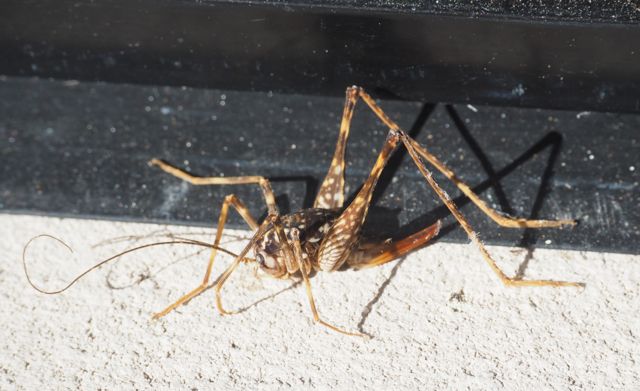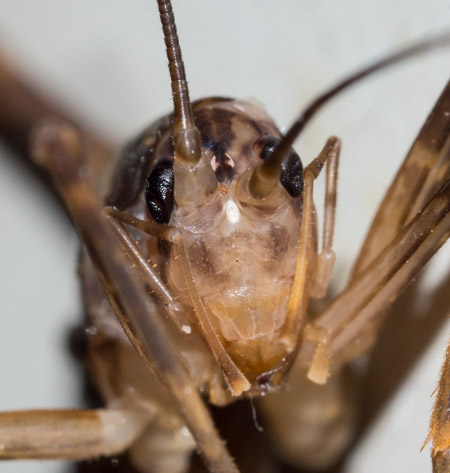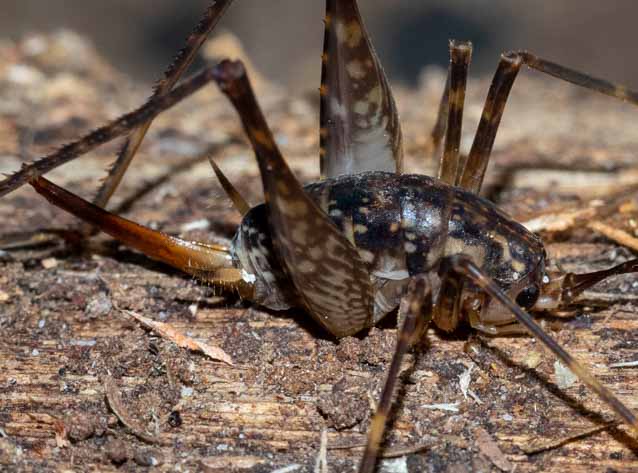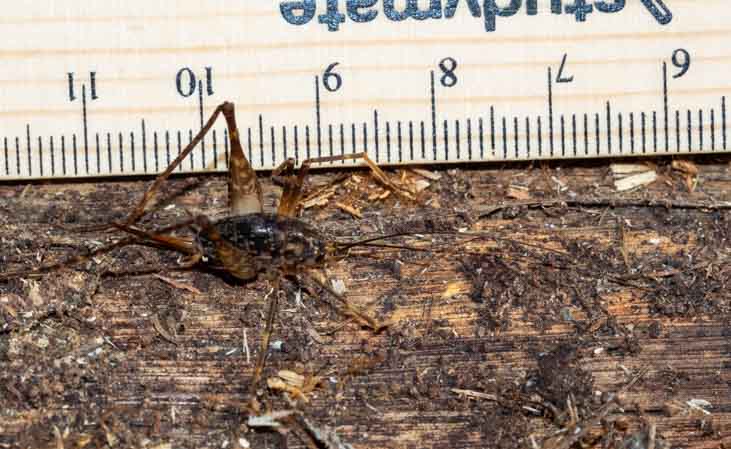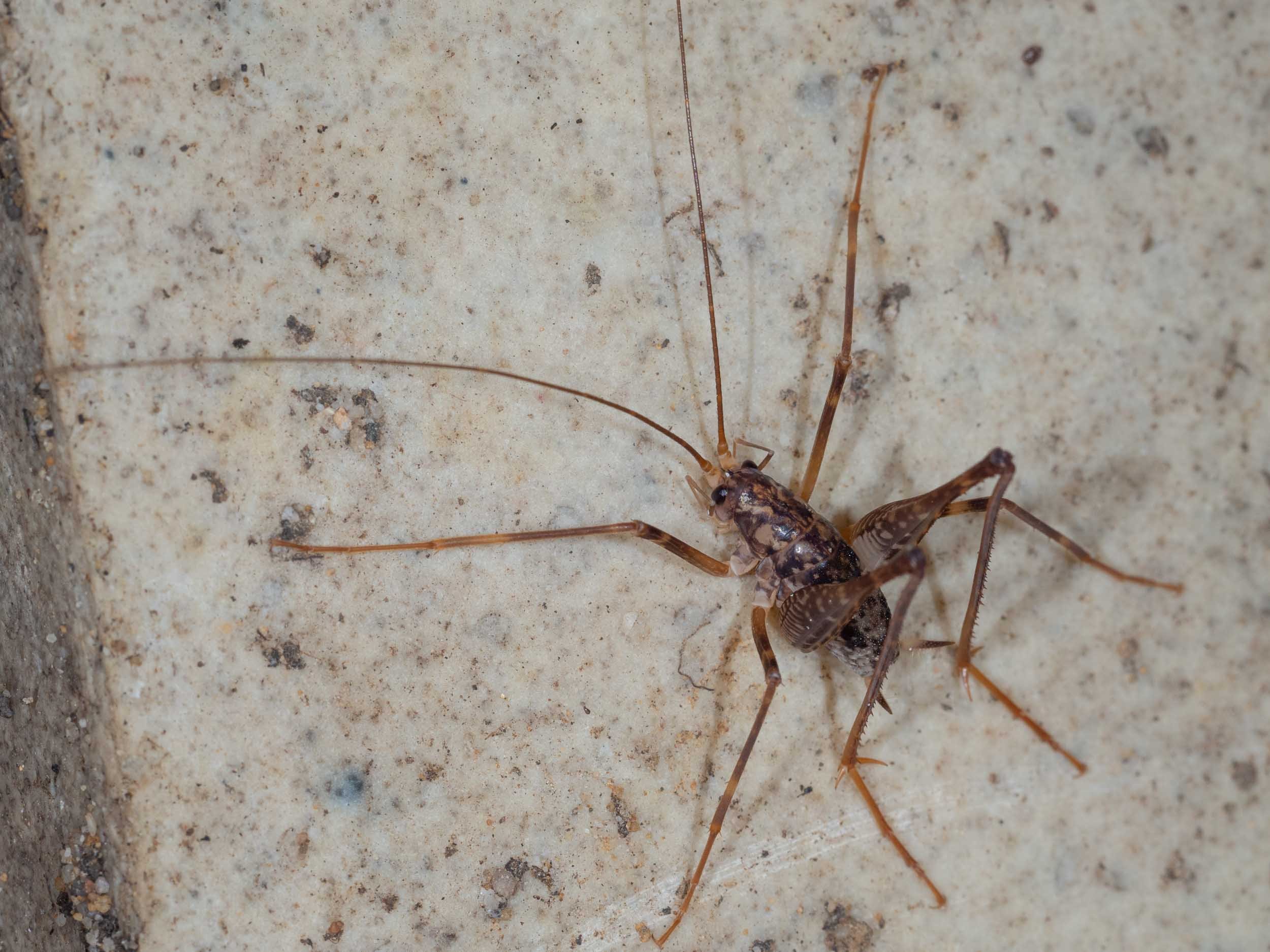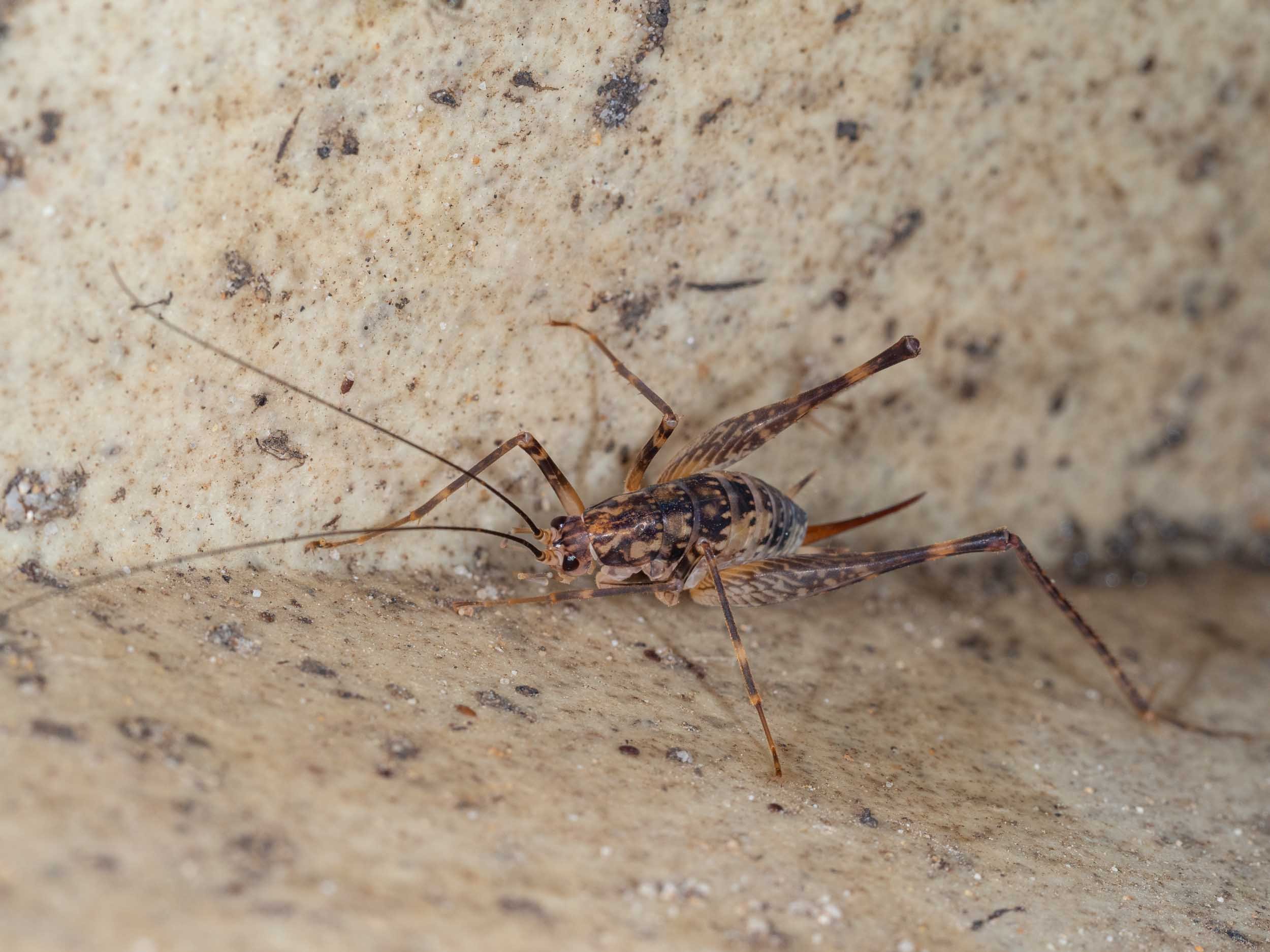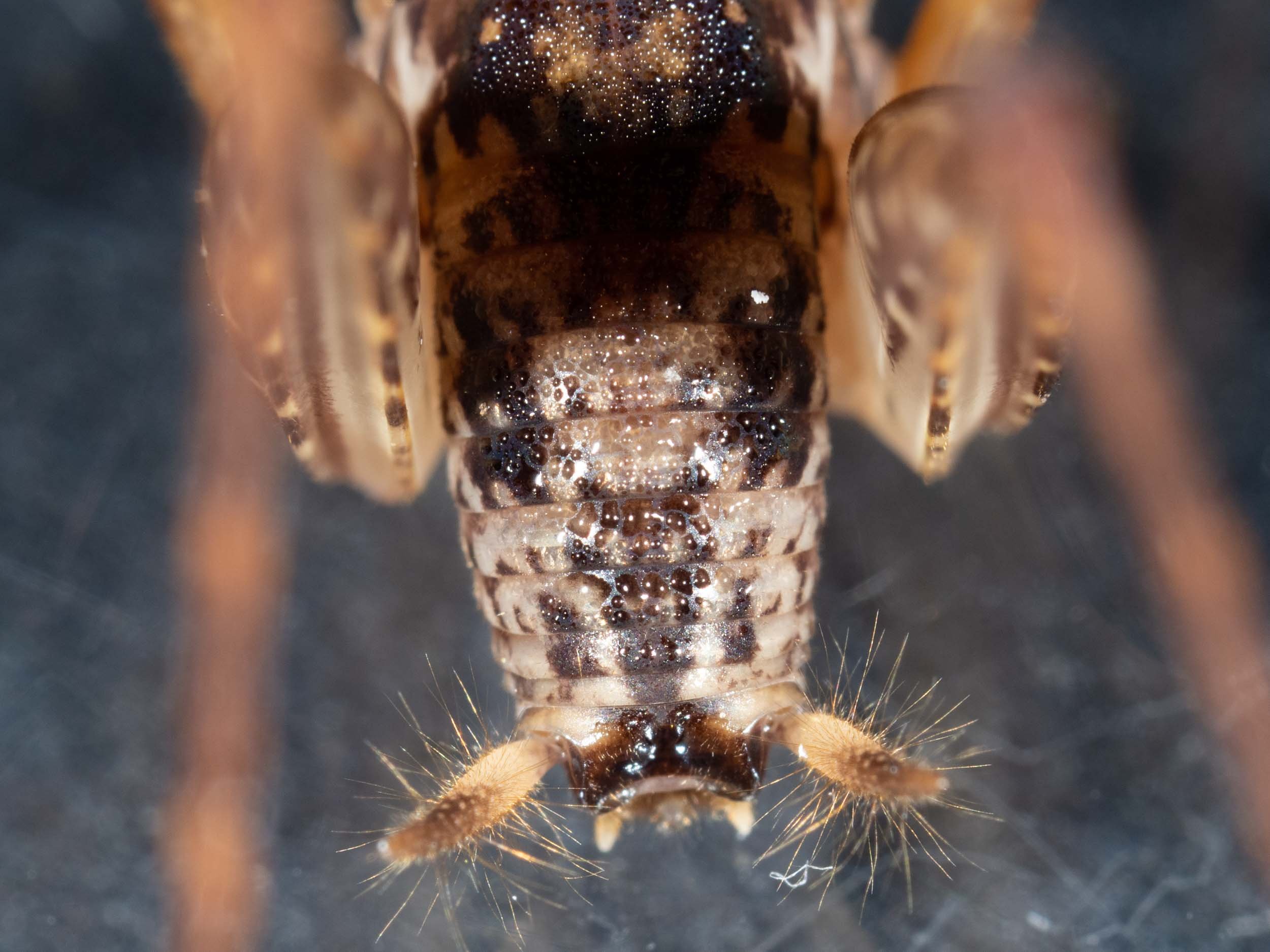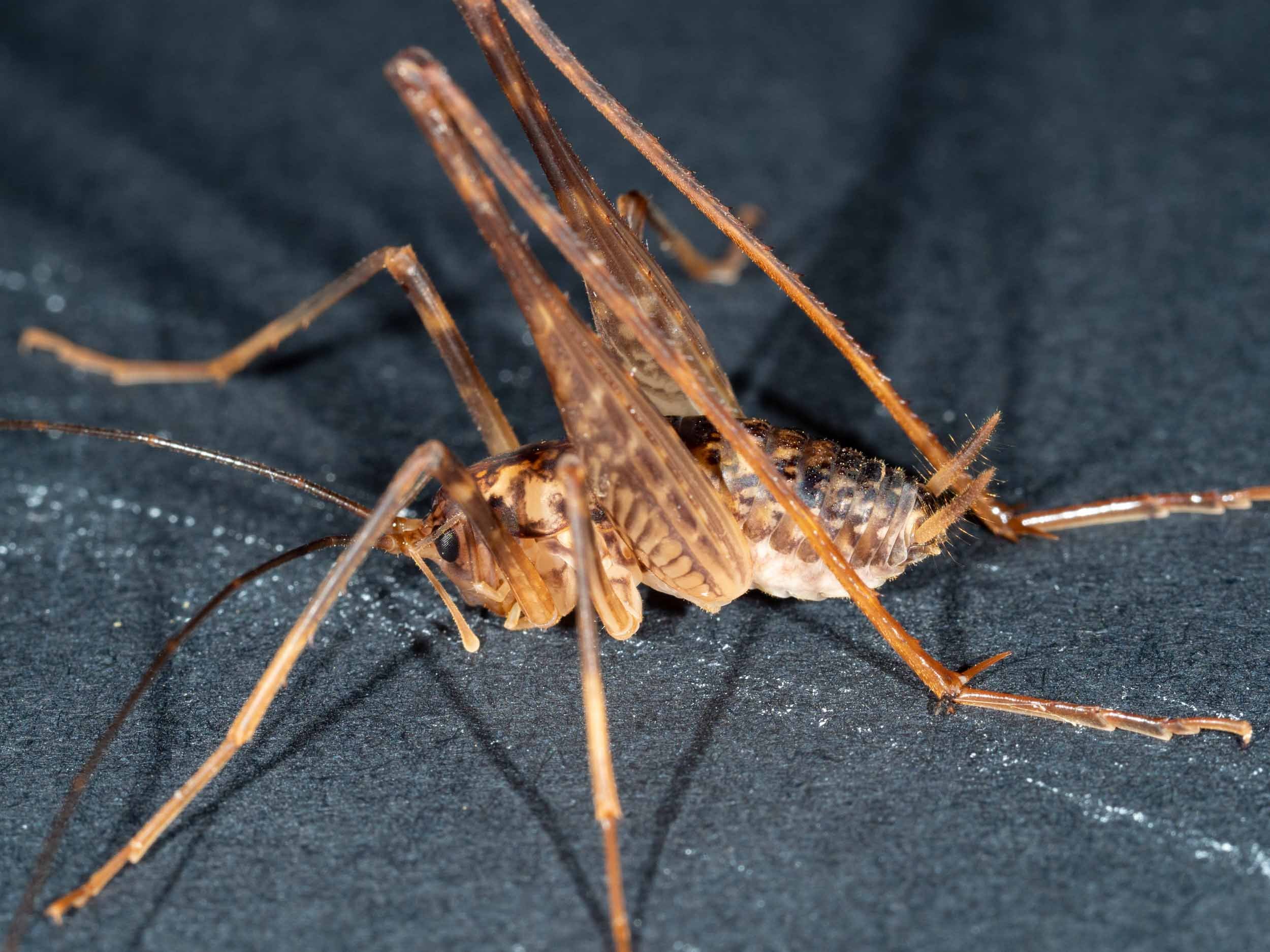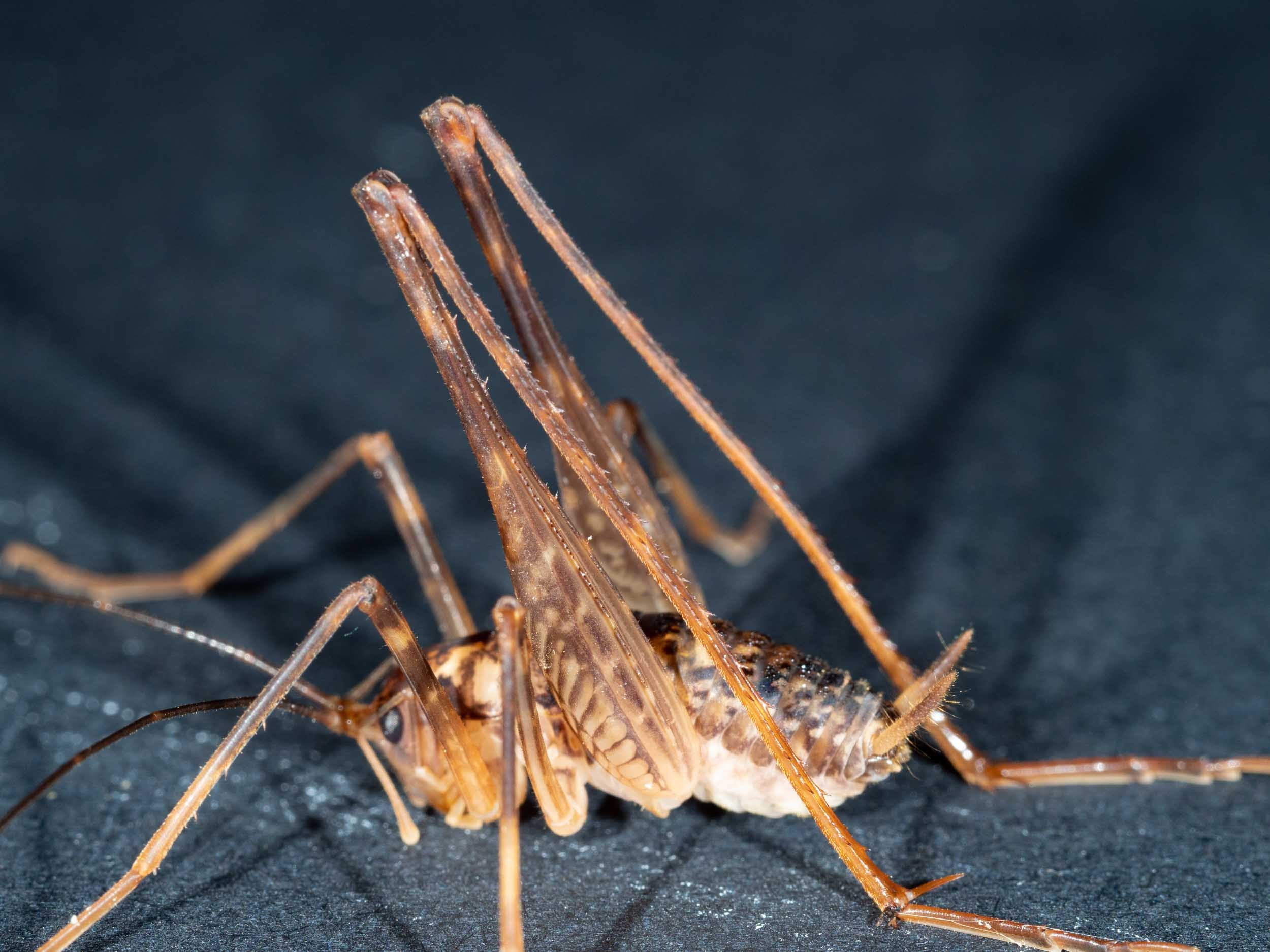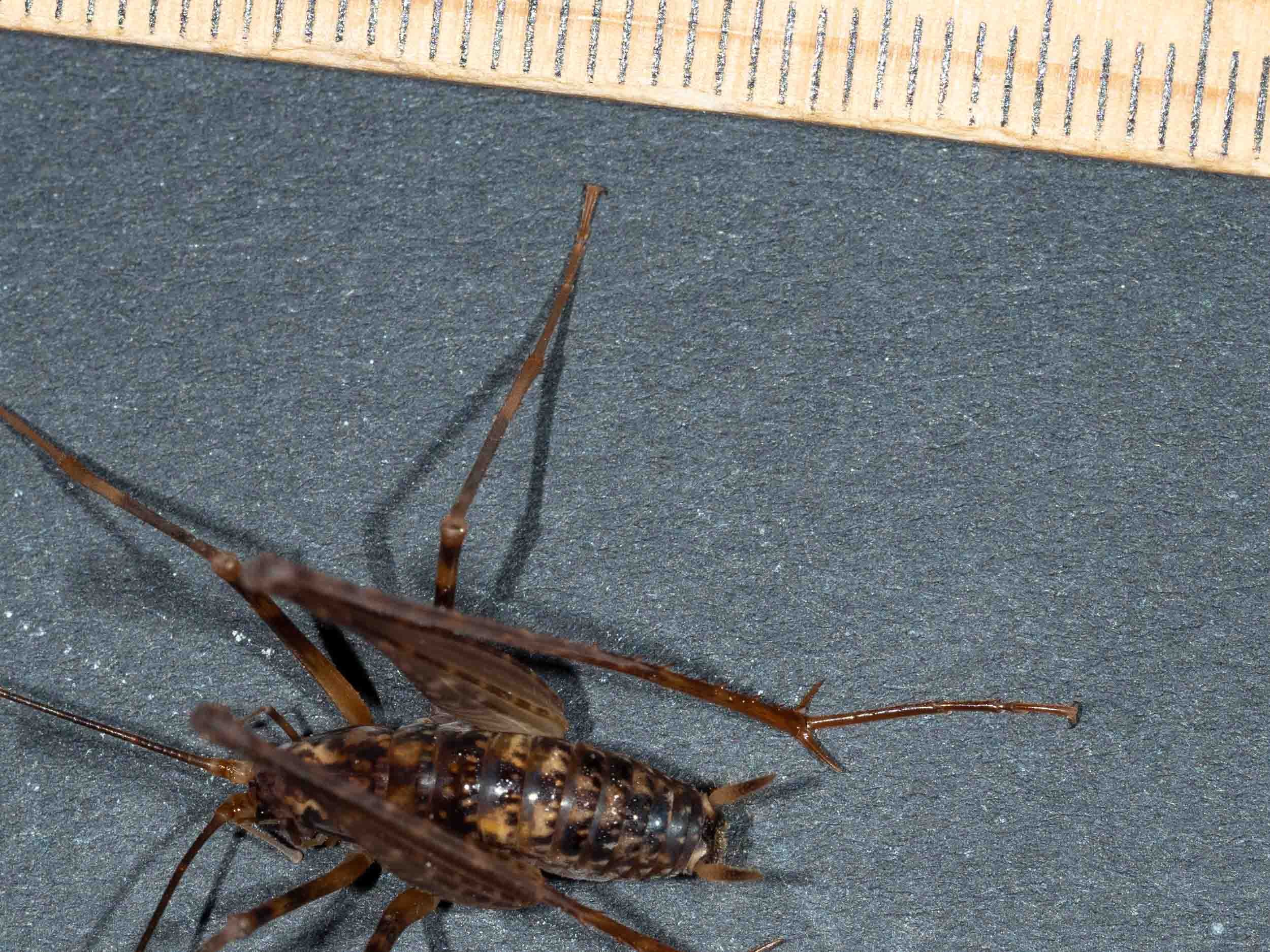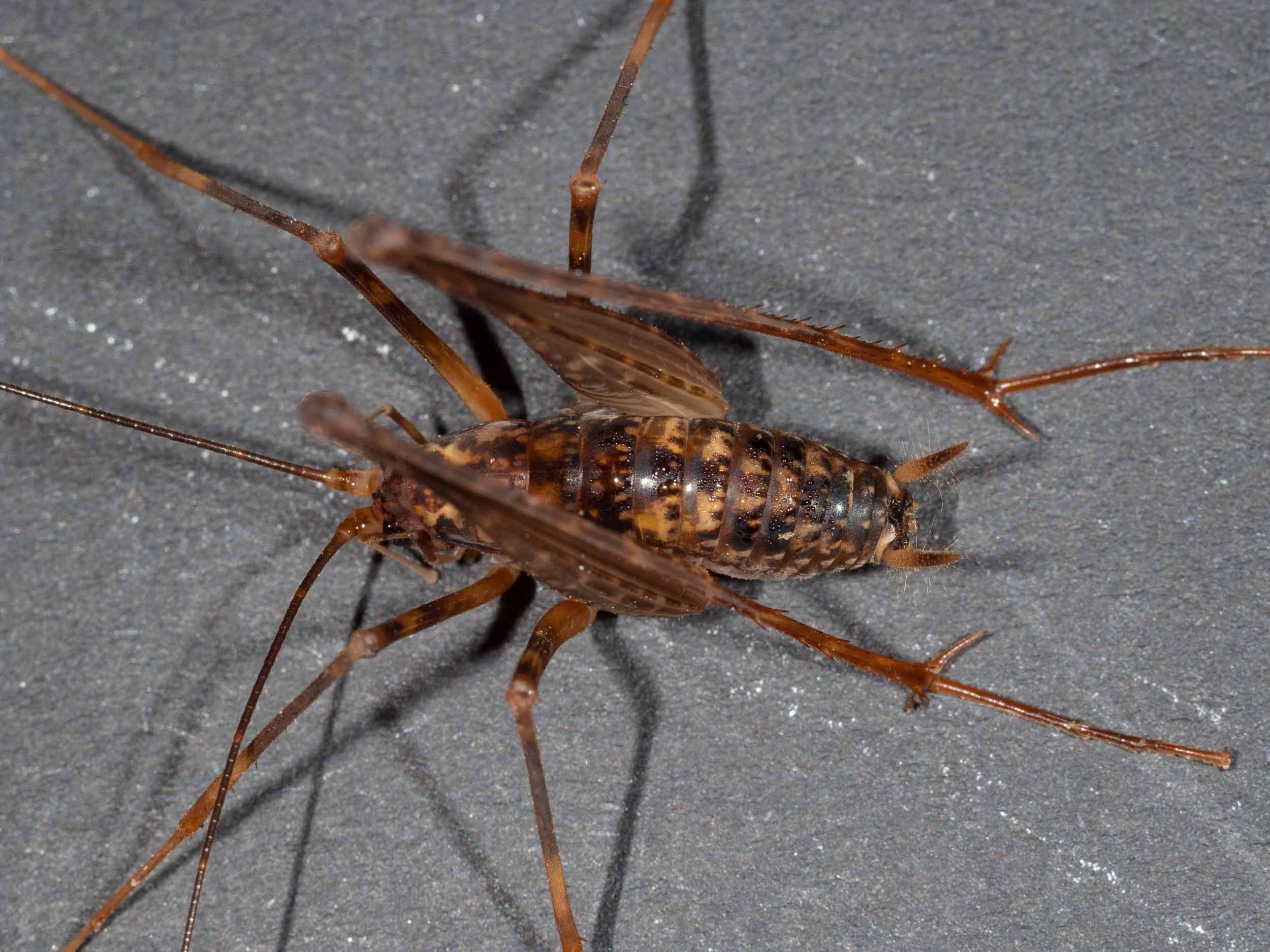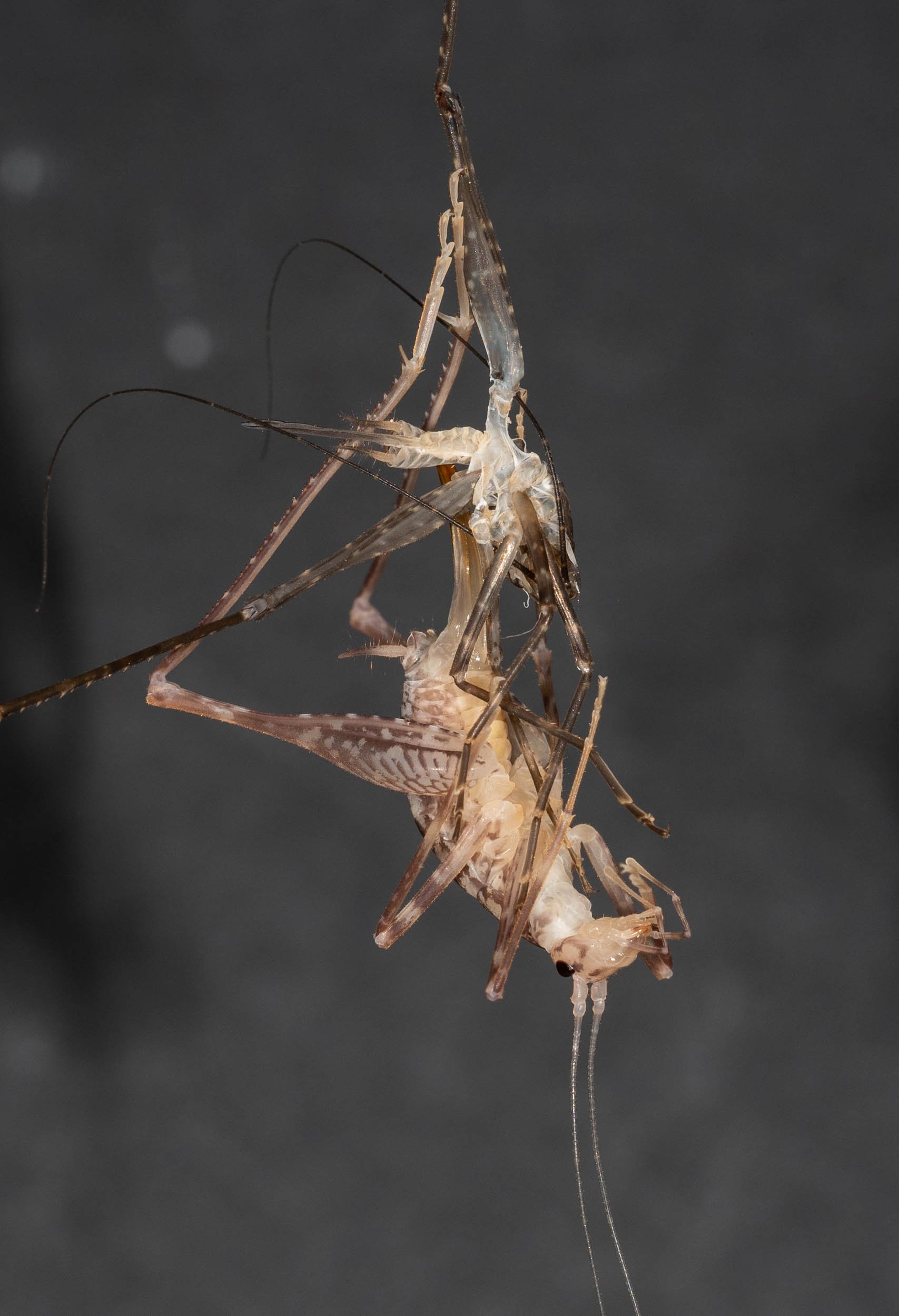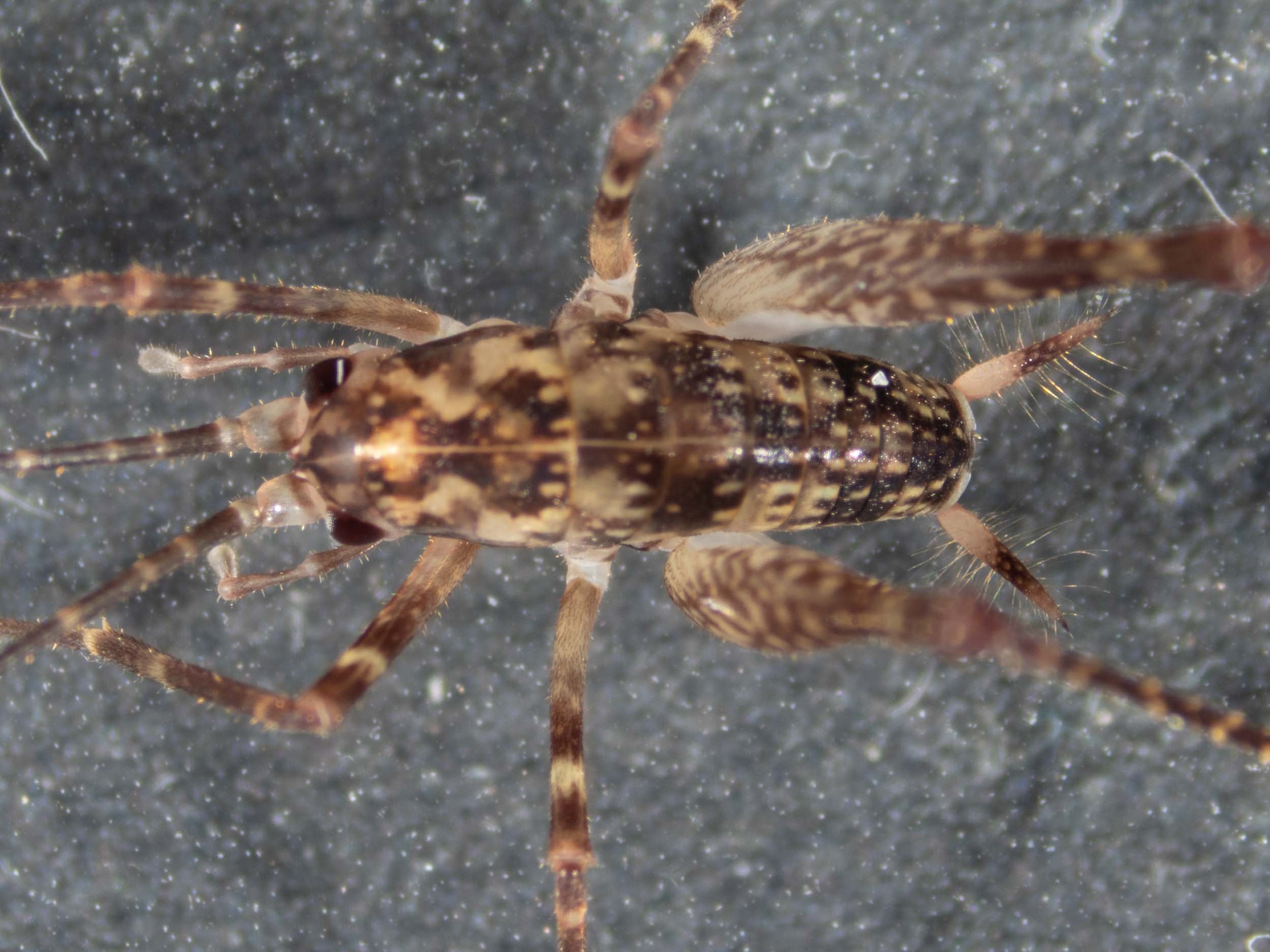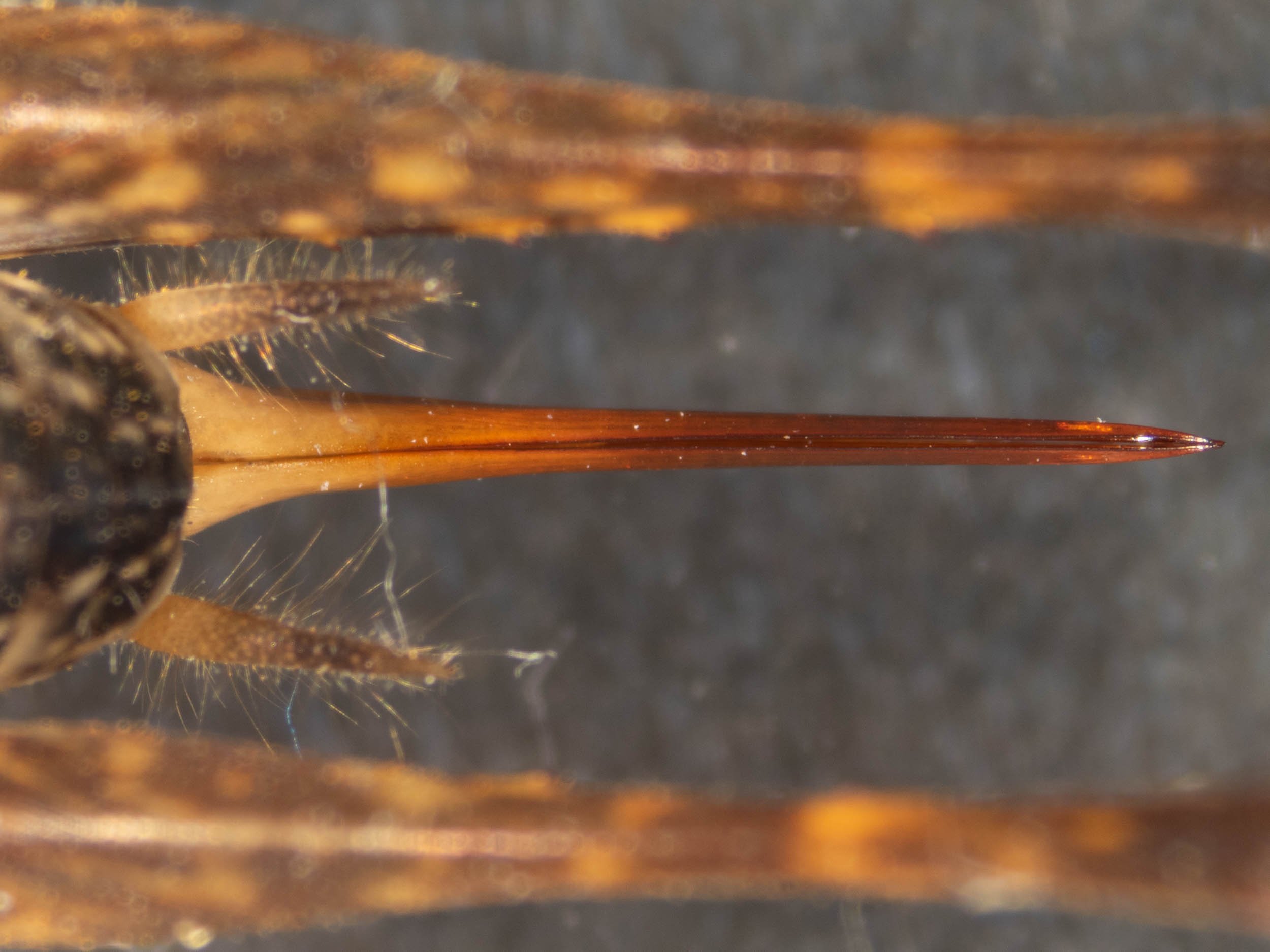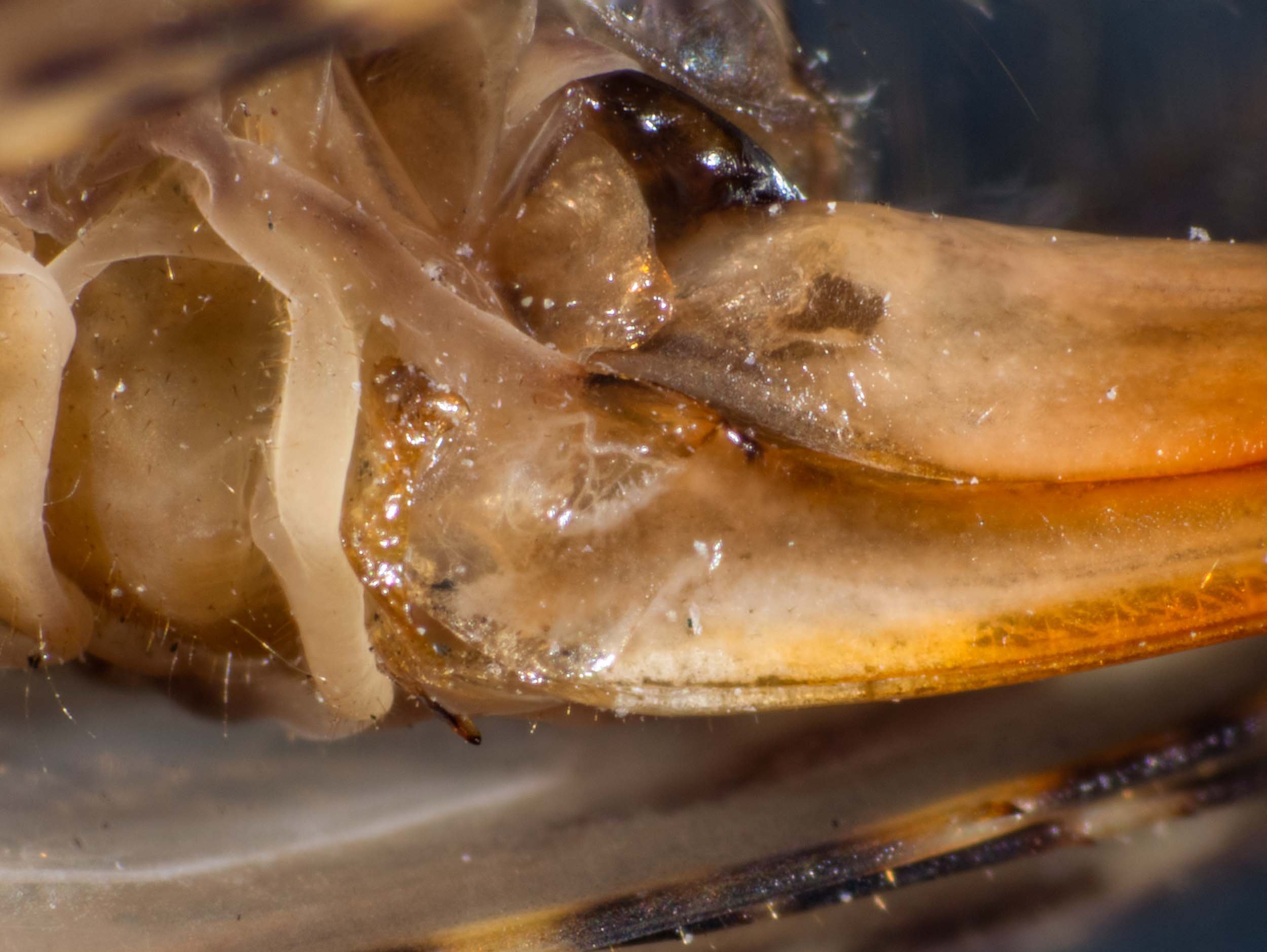Cavernotettix, Macropathinae

Workbook
Description of family Rhaphidophoridae
Most cave crickets have very large hind legs with "drumstick-shaped" femora and equally long, thin tibiae, and long, slender antennae. The antennae arise closely and next to each other on the head. They are brownish in color and rather humpbacked in appearance, always wingless, and up to 5 centimetres (2.0 in) long in body and 10 centimetres (3.9 in) for the legs. The bodies of early instars may appear translucent.
As the name suggests, cave crickets are commonly found in caves or old mines. However, species are also known to inhabit other cool, damp environments such as rotten logs, stumps and hollow trees, and under damp leaves, stones, boards, and logs.[3] Occasionally, they prove to be a nuisance in the basements of homes in suburban areas, drains, sewers, wells and firewood stacks.
Sightings made at home
Camel crickets found at home on 18/10/14 (on bedroom window sill), 4/5/16 (on deck), 15/5/18 (in Esky tub covering biolytix pipework - this one added to Naturemapr by Kerri).
All females, body length 10mm, ovipositor 10mm
Identification to genus
Micropathus and Parvotettix are only found in Tasmania and islands of Bass Strait
Only two genera found on mainland - Cavernotettix and Australotettix
Australotettix species are much larger than ours and morphology of subgenital plate differs from ours
Presence of retrolateral spine on fore coxa points to Cavernotettix, three species of which (including C. buchanensis) have been found in SE region.
Need to read Richards, A.M. 1966 Pacific Insects 8: 619-622 in which the genus Cavernotettix was erected to confirm genus.
Ask Bishop Museum, Hawai for copy of this paper.
Identification of species
Can eliminate C. craggiensis as this species has female body length of 17-19mm, ovipositor only 0.7 length of body and ovipositor has 8 small teeth. Also my species has many fewer spines on retrolateral side of femur than C. craggiensis.
C. flindersensis is larger (22mm male, 20mm female) and has spines on fore and middle femur.
C. buchanensis has thick coating of setae on suranal plate of female.
C. wyanbenensis has over 30 retrolateral spines on hind femur in female.
Counts of spines on femur of my species:
R femur - prolateral 34 spines, - retrolateral 4
L femur - prolateral 27 spines, - retrolateral 5-6 spines
Using Richards 1974, my species keys out to C. montanus on following criteria:
retrolateral spine on fore coxa
fore and middle femora without linear spines
suranal plate of female sparsely clothed with setae
fewer than 27 retrolateral linear spines on hind femur
This species has been seen in Yarrangobilly caves, which are relatively close. However, as it is a cave species it is unlikely to be mine. I do not know the morphology of this species. Need Richards 1966 paper in Pacific Insects 8(3) : 617-28 to get a description.
Future work
Try to examine the haplotype of C. montanus in ANIC. Key observations to make to determine whether our home insects are that species.
is the body length 15mm (male), 13.5mm (female) or less?
Is the ovipositor about as long as the body?
Are there 5 teeth on the ventral valves of the ovipositor?
Are there just 3-5 spines on the retrolateral side of the metathoracic femora?
Do the terminalia look like my insects?
Contact You Ning Su to get this information.
Other relevant links
This is a workbook page … a part of our website where we record the observations and references used in making species identifications. The notes will not necessarily be complete. They are a record for our own use, but we are happy to share this information with others.
August 2022 - Discovery of more cave crickets
7th August
While digging a shallow trench around the perimeter of the Biolytix tank, I turned over the protective concrete box which covers the control module. I found a number of cave crickets inside and photographed them. One male was removed for imaging inside and cover was replaced.
Further images of #1 male
Further images of #2 male (taken on 8th August)
8th August
Cover was turned over, revealing that the #3 female found on the previous day was in the process of moulting. She was brought inside and suspended vertically to aid ecdysis. Movies and still photos were taken of her.
The following movies were taken over a period of approximately 1hr 15min.
A moulting female nymph (7.5mm body length) was discovered at the bottom of the concrete box. We set it up to image but it had aborted the moulted. It had torn off its right hind leg and could not extract the tarsi of its other legs.
We euthenased it and kept it in a vial.
Two other smaller nymphs (#4, #5) were also found in the box. These were removed and imaged.
All living animals were placed in the buddy tank. A large cardboard box with a small opening cut into the bottom was placed in the tank. Soil from one of the compost bins which contained worms, collembolans and other invertebrates was included along with fish flake food, which they accepted.
A dead adult female cave cricket (#6) was found on the floor of the room with the tank. It is unclear how she came to be there. This animal was imaged to show key features. Will probably use this as a type specimen.
Body length 13.5mm.
Spines on hind femur: R. retrolateral 5, prolateral 33; L. retrolateral 4, prolateral 43.
This is a workbook page … a part of our website where we record the observations and references used in making species identifications. The notes will not necessarily be complete. They are a record for our own use.

